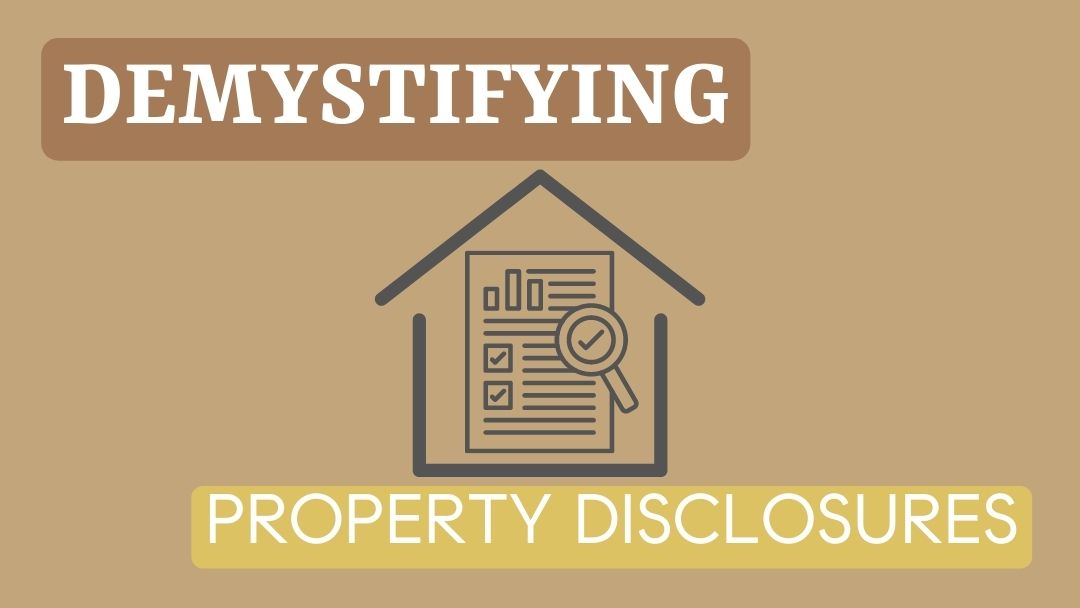Buying a home is a significant milestone in life, and ensuring that you make an informed decision is of utmost importance. Property disclosure documentation is a crucial aspect of the home-buying process, providing essential information about the condition of the property and potential issues that may require attention. However, interpreting these documents can be overwhelming for many home buyers. In this article, I delve into the process of understanding property disclosure documentation including home and pest inspections and statutory disclosures. These valuable insights should help you navigate this crucial aspect of the home-buying journey with confidence.
Pest Inspection Report
The pest report plays a vital role in uncovering any evidence of active infestation or damages caused by pests as well as faulty soil grades, cellulose debris, dry rot in the wood framing, damaged fascia boards, and more. When reviewing the pest report, pay close attention to Section I, which lists items that are currently affecting the property and require immediate attention. It is common for some Section I items to be present, but don’t be alarmed unless the list is extensive. Remember that certain pests are treatable and should not deter you from considering the property.
Purpose of a Home Pest Inspection
- The primary objective of a pest inspection is to detect any evidence of active pest infestations within the property. This could include termite mud tubes, rodent droppings, visible pests, or other signs of pest activity.
- Pest inspectors also look for any damages caused by pests, such as wood deterioration from termites or structural damage caused by rodents. They also assess damage that may be caused by water intrusion.
- Beyond identifying existing infestations, the inspection also evaluates conditions that may attract pests or provide them with an habitable environment.
- Results of the pest inspection can impact the price buyers may offer for the property, understanding that additional work may be needed to bring the property into a safe and habitable condition.
Interpreting a Home Pest Inspection
Interpreting a pest inspection report can be challenging, especially for those unfamiliar with the terminology and assessments involved. Here are some key steps to effectively interpret a home pest inspection:
- Start by reviewing Section I and Section II Items. Section I lists items that are currently affecting the property and require immediate attention. These are typically active infestations or conditions that need urgent remediation. In contrast, Section II includes items that are conducive to pest problems or may lead to infestations in the future. These issues are not as urgent as those in Section I but should be addressed over time to prevent future problems.
- Consider the extent of the Issues. Pay attention to the severity of the identified infestations or damage. Assess how extensive the problems are and whether they can be easily resolved or require significant repairs.
- Take into account the dollar value associated with the recommended repairs. Keep in mind that some recommendations may be expensive but fall under Section II, making them less critical for immediate attention.
- If you find any technical terms or jargon in the report confusing, consult your real estate agent, a pest control expert, or the inspector themselves. They can explain the details and implications of the findings. You shouldn’t hesitate to call the inspector directly for clarification or to ask further questions. They are generally happy to speak with you!
Interpreting Dollar Value Reports
Upon reviewing the pest report, you may come across dollar values attached to recommended repairs. It is essential to take these values lightly as they can sometimes be substantial, reaching $30,000 or more. However, keep in mind that some of these suggestions might fall under Section II items, which can be addressed over time. Note that many line item costs in the pest report are provided by the pest inspection company and are likely available from a general contractor for a lower cost. To better understand the significance of these recommendations, consult with your real estate agent who can guide you through the details and help you make informed decisions.
Home Inspection Report
A home inspection is a thorough examination of a property’s physical condition and systems, conducted by a licensed home inspector. The purpose of a home inspection is to provide the buyer with a comprehensive understanding of the property’s condition, identifying any existing issues, potential concerns, and safety hazards. It is a critical step in the home-buying process that helps buyers make informed decisions about the property’s value, potential repairs, and maintenance needs.
The home inspection report typically includes a “primary recommendations” page or summary of items that require attention. Some of the language in the report may come across as intimidating as it is written to be court defensible. Rely on your Realtor’s expertise to help you understand the difference between critical concerns and less pressing matters.
Purpose of a Home Inspection
- The home inspector assesses the property’s foundation, walls, roof, and other structural elements to identify any deficiencies or safety hazards.
- The inspection includes a thorough examination of the property’s heating, ventilation, air conditioning (HVAC), plumbing, and electrical systems to ensure they are functioning properly.
- The inspector looks for signs of water damage, leaks, or moisture-related problems, as these can lead structural deterioration.
- Assuming the property includes appliances such as a water heater, stove, or dishwasher, the inspector checks their condition and operation.
- The inspection covers the exterior of the property, including the siding, windows, doors, and drainage systems, to identify any maintenance or repair needs.
- While a home inspection does not replace a pest inspection, the inspector may note visible signs of pest infestations and recommend further evaluation. It’s useful to cross reference the items in the home inspection that correlate to the pest inspection to verify severity.
Another thing to consider about home inspection report results are opportunities for sustainability upgrades. For example, if a furnace is at the end of its functional life this could be a chance to upgrade to a more efficient and cost effective heat pump. Not only do these devices run on electricity, thus reducing greenhouse gases and poisonous methane, but they lower your monthly utility bill while provide heating AND cooling to your home.
Interpreting a Home Inspection
Interpreting a home inspection report is essential to understand the property’s strengths and weaknesses fully. Here are some key steps to effectively interpret a home inspection:
- Begin by reading the inspector’s summary and overall findings. This section provides an overview of the property’s condition and highlights any significant issues. This section is typically at the end of the report.
- Pay particular attention to safety and structural concerns, as these are critical and may require immediate attention.
- The report may categorize findings as major issues that need prompt resolution and minor concerns that are less urgent. Understanding this distinction helps prioritize necessary repairs. It will also give you a sense of what issues are cosmetic, and which are potential safety concerns.
- Keep in mind the age of the property while interpreting the report. Many older Berkeley homes may have wear and tear, and some issues may be expected due to the property’s age.
- The report may provide estimated costs associated with necessary repairs and maintenance based on the inspector’s recommendations. However, many items may recommend that you contact a specialist for more information or cost estimates. This doesn’t mean those items will necessarily be problematic or expensive, just that the degree of specialization required to adequately assess the condition goes beyond the scope of the inspector’s experience.
- If the report includes technical jargon or unfamiliar terms, ask your real estate agent to explain these details in plain language. If your Realtor can’t answer the questions, they will be able to provide you with resources or other vendors who can.
- If major issues are identified in the report, consider seeking advice from specialized contractors or engineers for further evaluation and estimates.
Understand the Role of Statutory Disclosures
In addition to the pest report and home inspection report, the Seller Property Questionnaire (SPQ), Real Estate Transfer Disclosure Statement (TDS) and the Natural Hazard Disclosure statement (NHD) are vital statutory disclosures that provide significant additional information on the property condition. These disclosures are completed by the seller and outline any known issues affecting the property. By carefully reviewing these documents, you gain valuable insights into potential red flags and areas of concern.
Note that sellers are only obligated to disclose information that they have first hand knowledge of. They are not required to perform any research or investigate condition details beyond what is observable. Therefore, you should weight the pest and home inspection reports above the seller completed statutory disclosures.
Seek Professional Guidance
Throughout the process of reviewing property disclosure documentation, it is essential to seek guidance from professionals, especially if you encounter terms or details that you find unclear or confusing. Home inspectors, structural engineers, roofers, and other vendors play a crucial role in helping you interpret the documents accurately. Their experience and knowledge can shed light on complex issues and ensure that you have a comprehensive understanding of the property’s condition.
Above all, consult with your Realtor to better understand the terms of the disclosures. If your real estate representative can’t clearly explain the language in the reports and help you interpret the recommendations, you need to find a new agent. An exceptional agent will guide you to experts who can further illuminate the likely costs of remediating any concerns raised in the disclosures.
Cross-Reference Information
To develop a well-rounded understanding of the property’s condition, cross-reference information from different disclosure documents. You can quickly assess a home’s general condition by cross referencing the home inspection report summary against the Section I pest work authorization bid. Once you’ve done this initial screening, you should read every section of all reports and disclosures for a complete view of the property condition and history. Comparing details from the pest report, home inspection report, SPQ, and TDS can help identify any discrepancies or areas that require further investigation. This thorough approach ensures that no stone is left unturned and that you are well-informed before making any decisions.
One of the advantages of having a strong understanding of all the condition issues of a property is that you can factor the costs of repair into your offer price without the need of an inspection contingency. This will make your offer more competitive and increase the chances of you getting into contract. That said, you should always consult with your Realtor on the best offer strategy and which disclosure items are of serious concern and which can be deferred.
Conclusion
Property disclosure documentation is an invaluable resource that equips home buyers with the information they need to make educated decisions. Starting with the last page of the Section I pest report, interpreting dollar value recommendations, and reviewing the home inspection report are critical steps to understanding the property’s condition. Additionally, the statutory disclosures, including the Seller Property Questionnaire, the Real Estate Transfer Disclosure Statement, and the Natural Hazard Disclosure provide essential insights into any known issues affecting the property. By seeking professional guidance and conducting a comprehensive review of all disclosures, you can confidently navigate the complexities of property documentation and find a home that meets your needs while safeguarding your investment.
If you ever need help interpreting property disclosures, please don’t hesitate to reach out to me for support. Remember, a well-informed buyer is a confident buyer!




